
- The Italian diet has long been touted as one of the healthiest in the world, but this is starting to change.
- Italy’s obese and overweight population is growing.
- Here, we explore how the diet has changed over the last 40 years and consider the potential drivers.
The Healthiest Diet in the World?
The Italian diet (rich in oils, fish, fresh fruit, and vegetables) has long been considered one of the healthiest in the world.
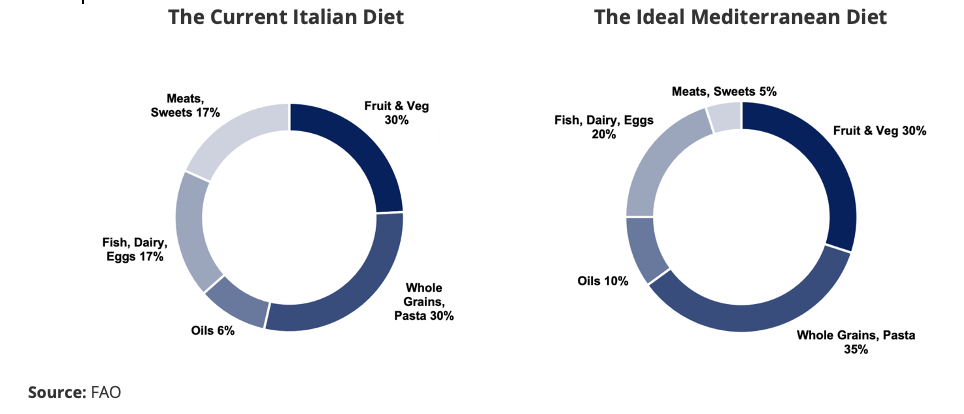
However, over the last 50 years, something has changed in Italy. Not only is total calorie intake on the rise, but the foods Italians eat are slowly changing. The share of meats and sweets in the diet has significantly increased, while grains, pasta, bread, oils, fish, and dairy have all decreased.
In conjunction with this change, there’s now greater concern over the growing rates of obesity and overweight population. Between 1975 and 2015, the prevalence of both obesity and overweightness has risen in Italy, reaching 20% and 64% respectively in 2015.

Is it a changing diet that’s causing this? One explanation is that Italians are eating more processed and convenient food rather than fresh fish, meat, fruit, and vegetables.
The Amount of Food
A 10-year study conducted by the University of Firenze showed that today’s diets have higher energetic density as well as a decline of the typical Mediterranean staples of fruit, vegetables, and fish. In Northern Italy, especially, there was higher prevalence of convenience food.
Italy is certainly eating more than it was 50 years ago too. Total caloric intake now sits at around 3,500 calories, up 550 calories from 1961.

Strangely, though, these additional calories don’t come from carbohydrates. Caloric intake from carbohydrates has actually dropped since 1961, while calories from fat have significantly increased. Calories from protein have remained relatively stable.
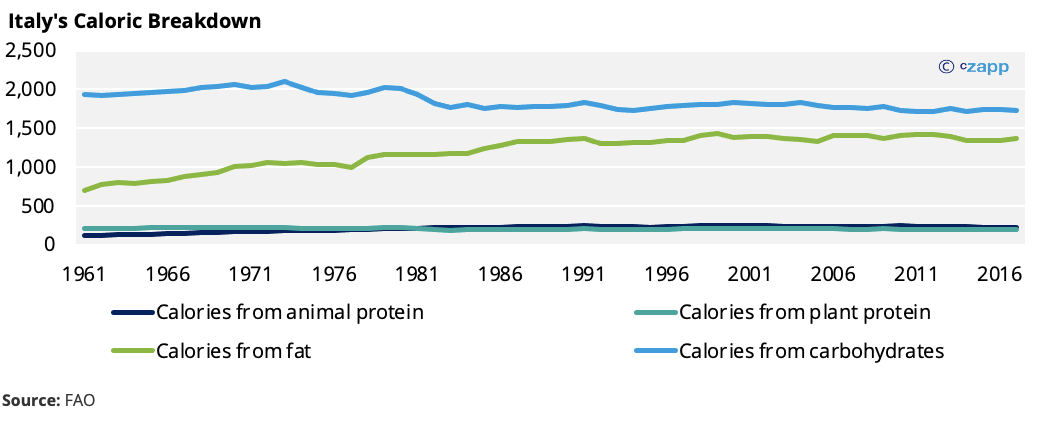
Carbohydrates have now gone from making up about 65% of the total Italian caloric intake to less than 50%. Conversely, fat accounts for about 40% of calorie intake, up from about 25% 60 years ago.

So, what exactly are Italians eating? Mostly the same things, except there’s been a drop in intake of cereals, and consumption of animal products and vegetable oils has increased substantially.

The Type of Food
Processed foods that are high in sugar, salt and fats are often identified as causing increases in weight. In Italy, though, just 7% of the food service market comprises of chain restaurants, with the rest being independent eateries. Although these meals tend to be richer and portions are often larger than they are at home, these foods are less likely to be processed.

A systematic review of worldwide consumption of ultra-processed foods conducted in 2021 also found that Italy has the lowest levels of energy intake from ultra-processed foods in the world, at just 10% of total energy intake.
There’s also far more at-home food consumption in Italy compared to other countries. Italians’ out-of-home food expenditures account for just a fraction of total food expenditure. About 80% of food and non-alcoholic beverages are purchased for at-home consumption in Italy, and this has not changed dramatically over the last 20 years.
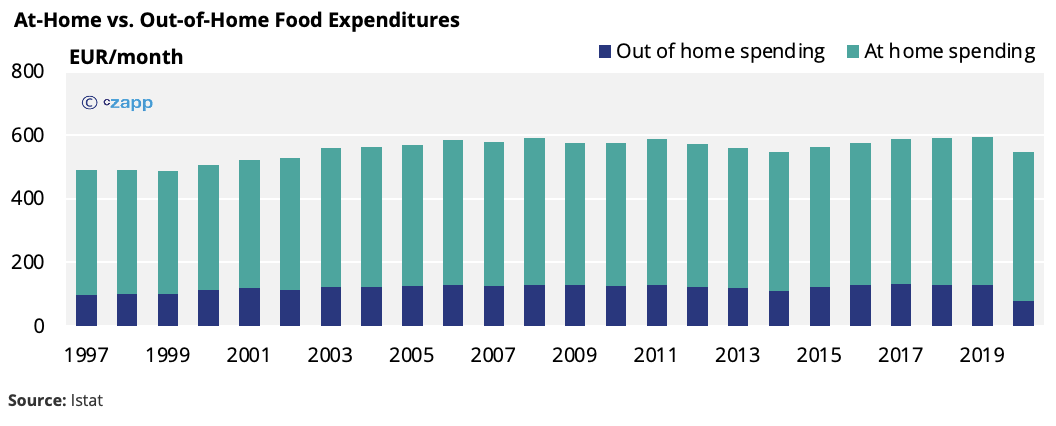
In FAO research, there was a correlation in the increase of BMI with annual fast-food transactions, but in Italy, this relationship was on the smaller end of the scale.
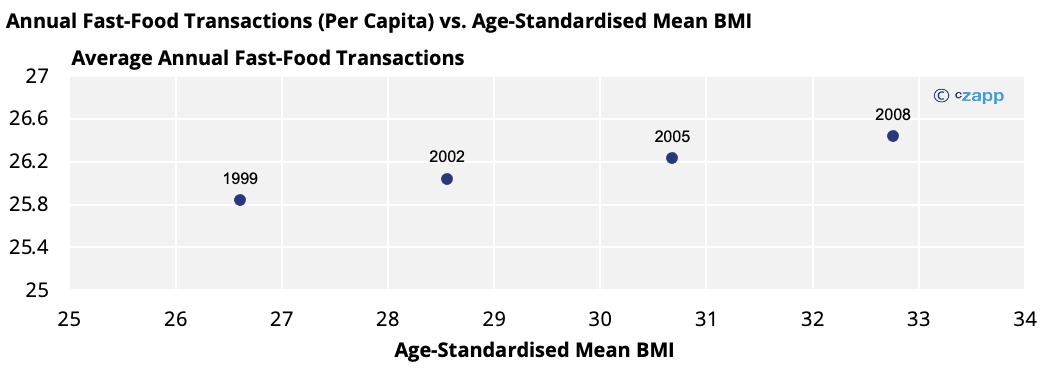
Countries Included: Australia, Austria, Belgium, Canada, Czech Republic, Denmark, Finland, France, Germany, Greece, Hungary, Ireland, Italy, Netherlands, New Zealand, Norway, Poland, Portugal, Slovak Republic, Spain, Switzerland, United Kingdom, United States.
Source: WHO
This all suggests that the actual foods eaten in Italy are not really the issue. High levels of at-home consumption and very few chain restaurants are indicators that Italians are not eating an excess of food that’s high in added sugars, salts, and fats.
Moreover, sugar and sweetener consumption has remained relatively flat in the last 50 years and consumption of other carbohydrates, such as cereals, has dropped.
Are Soft Drinks the Answer?
According to the Italian Bottling Institute, non-alcoholic beverage consumption reached about 17.9b litres in 2020. Notably, the lion’s share – about 73% of Italy’s non-alcoholic beverage consumption – is from mineral water. Italy’s carbonated drinks consumption is among the lowest in Europe, at around 50 litres/year on a per capita basis.
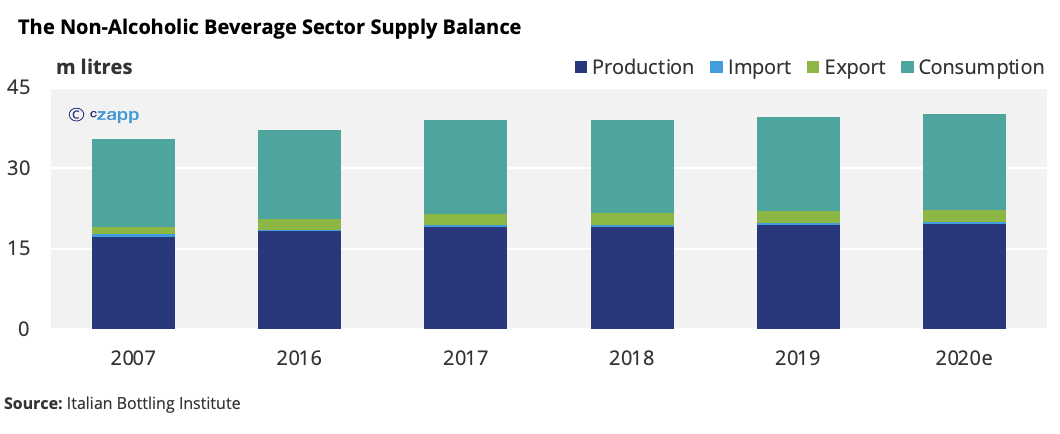
Coca-Cola brands are the most popular, accounting for 50% of total consumption. However, this also includes the diet and sugar-free brands.
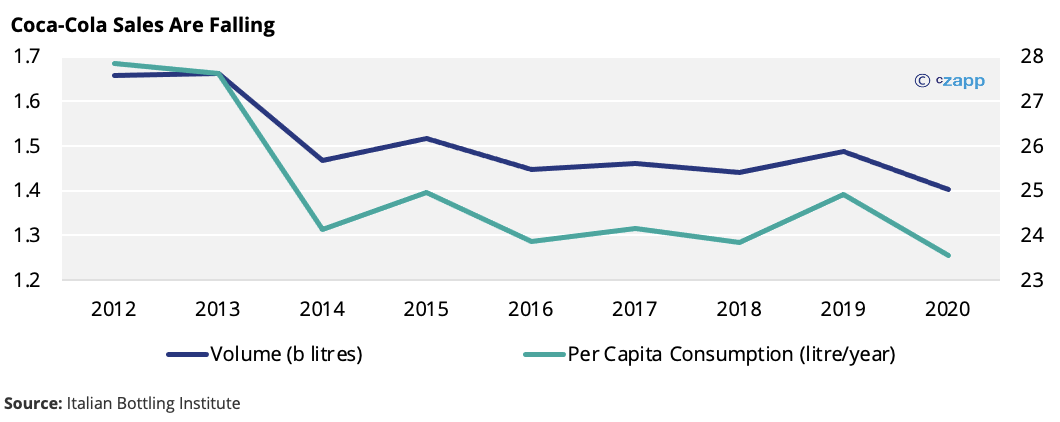
Coca-Cola consumption on an absolute and per capita basis is falling. The second-largest type of sugar-sweetened beverage consumed is orangeade, and this is also losing popularity, at just 17% of the total in 2019, according to the Italian Bottling Institute.
A Gender Question
While Italy’s obesity and overweight prevalence is certainly increasing, something interesting is happening with BMI. Over the last 45 years, the country’s women have registered just a marginal increase in BMI and, as of 2016, it remained within healthy levels.
Meanwhile, mean male BMI continues to increase and is now well within the overweight range.
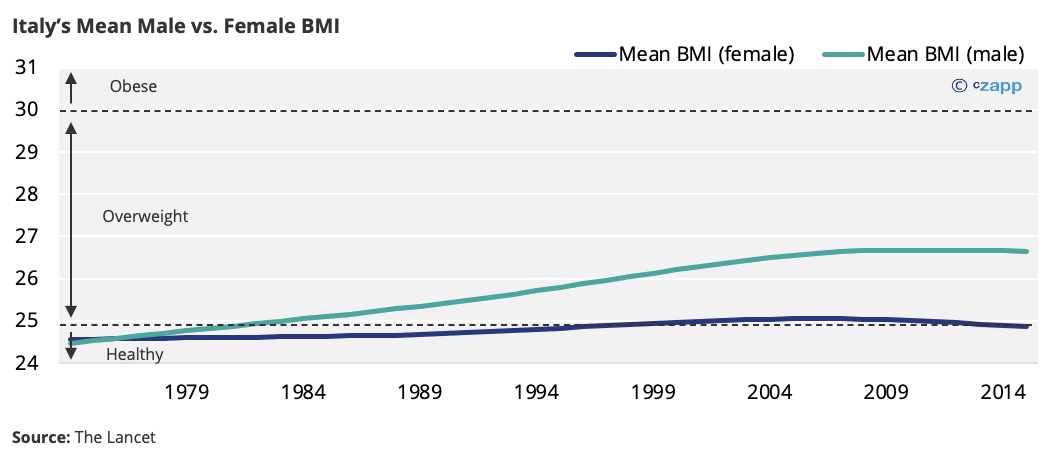
There’s also a very low level of physical activity in Italy, and this is becoming more prevalent according to Eurobarometer data. Non-participation in moderate physical activity among adults over 18 years old reached 60% in 2017, up from 50% in 2002. The prevalence of insufficiently active 11 to 17 years old is also rising, reaching 88.6% in 2016.
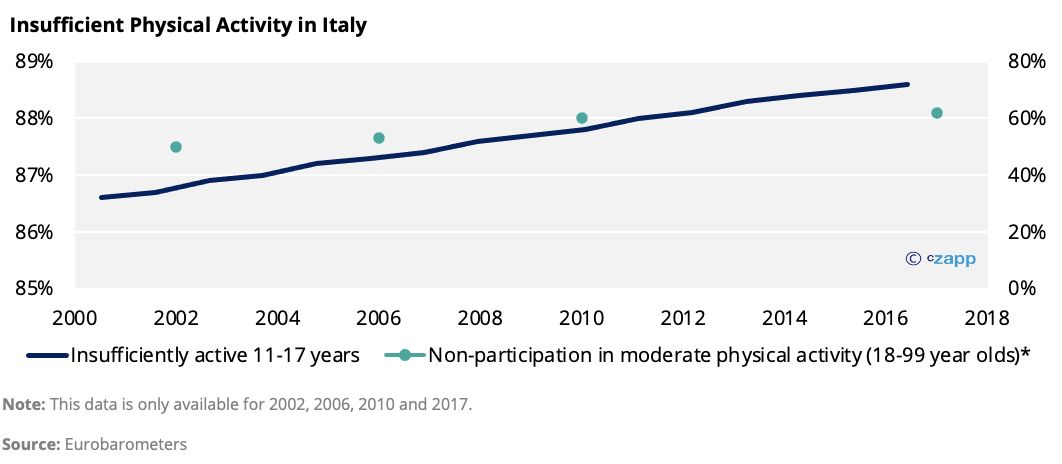
Interestingly, however, physical activity in males is higher than in females, which flies in the face of the steadily rising BMI data in men while female levels remain flat. According to the WHO, 46.2% of Italian females are insufficiently active, compared with just 36.2% of men.
Weight Problems Are Emerging Early
One of the most concerning statistics to emerge from Italy is the child overweight rate, which continues to climb. According to the Global Burden of Disease Study, about 35% of children in Italy are overweight, based on WHO Child Growth Standards, and this should increase in the next 10 years.
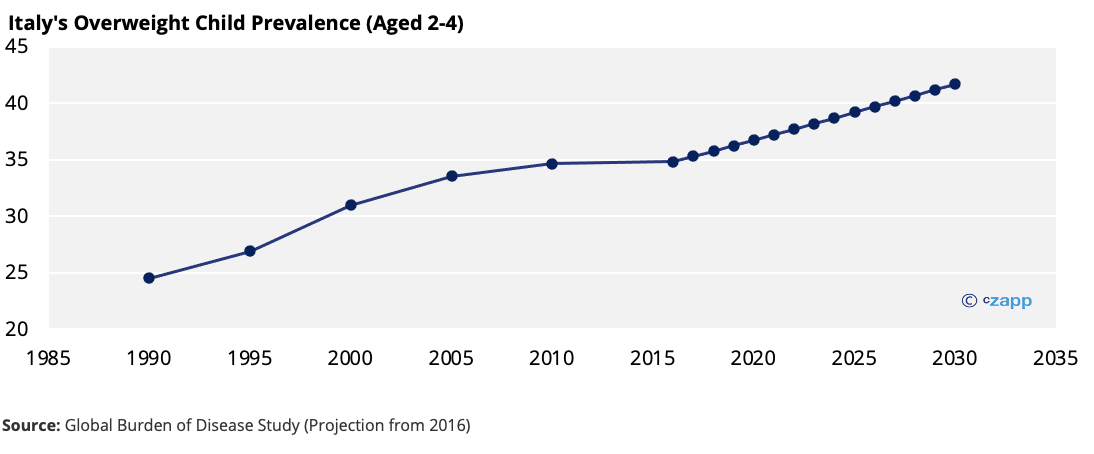
This would suggest that diet may not be completely to blame for Italy’s weight problems.
Conclusions
Modern life is demanding. At the same time, incomes are increasing, making it possible for people to afford the convenience culture. The problems with the Italian diet likely have the same root as many others – excess. As incomes have increased, so have number of calories consumed (by about 500 calories per day in the last 50 years), as food has become plentiful and much more varied. This, in turn, has driven the prevalence of overweightness and obesity in the country.

Other Insights That May Interest You…
Czapp’s Sugar Consumption Case Studies
World Sugar Market Five-Year Forecast
Explainers That May Interest You…







